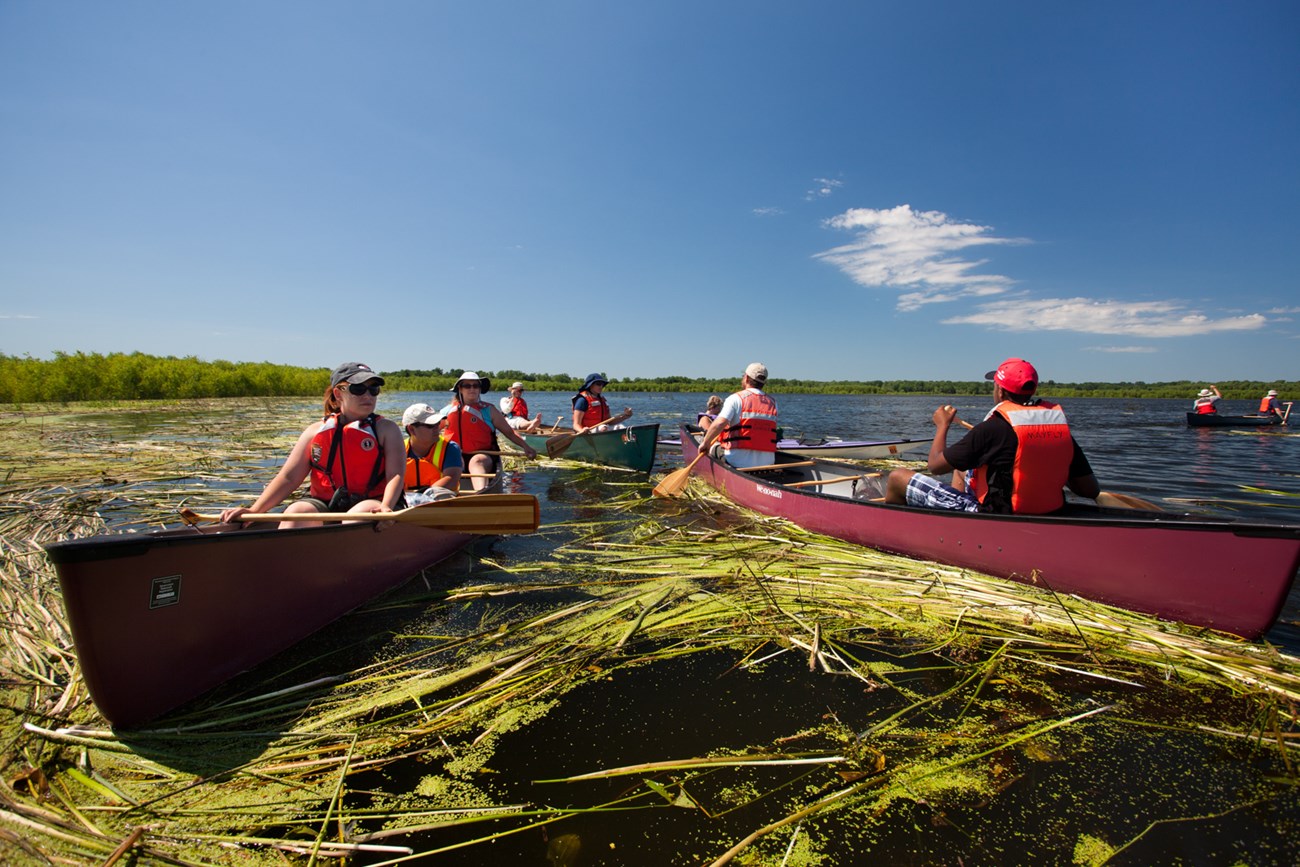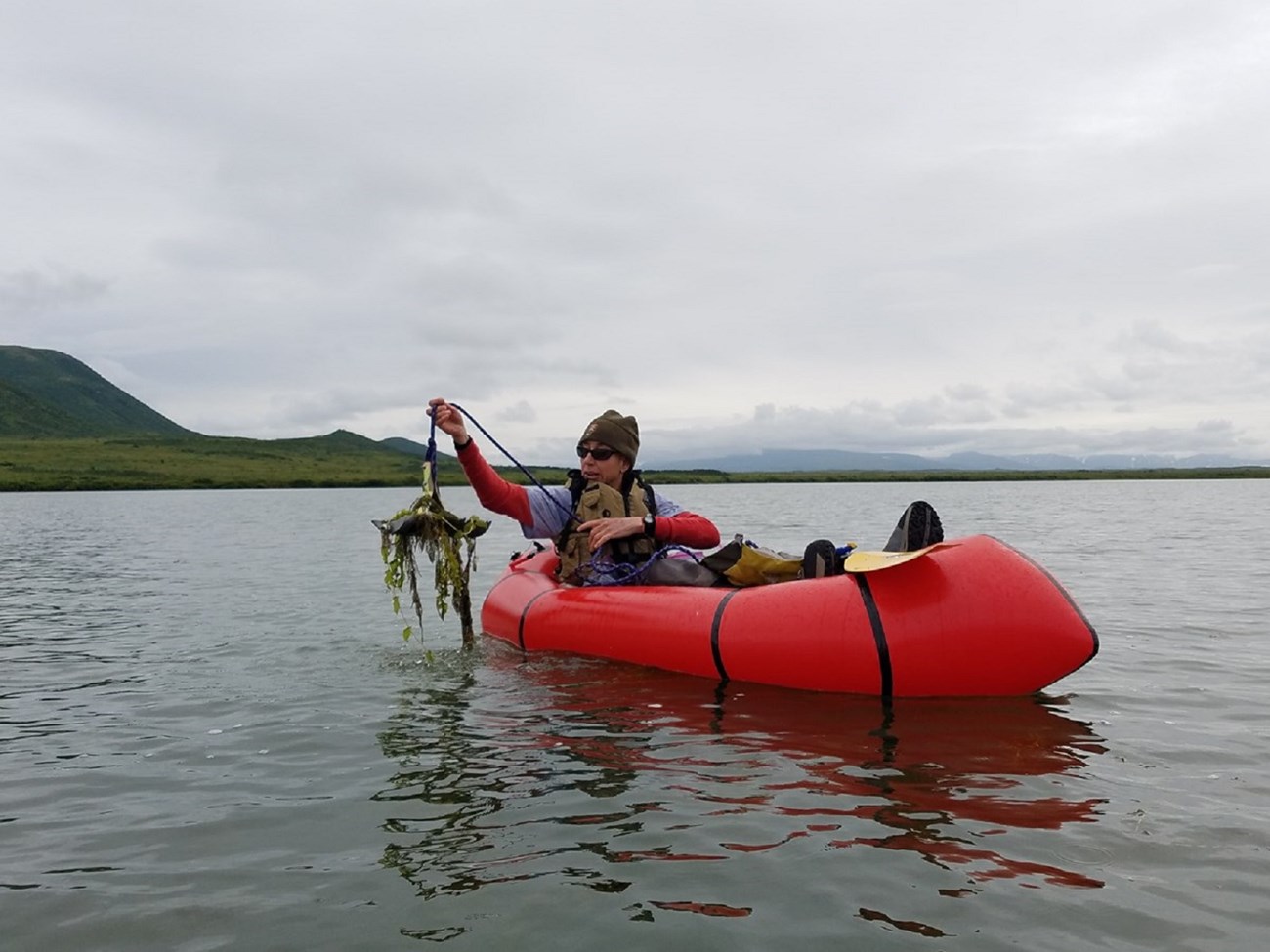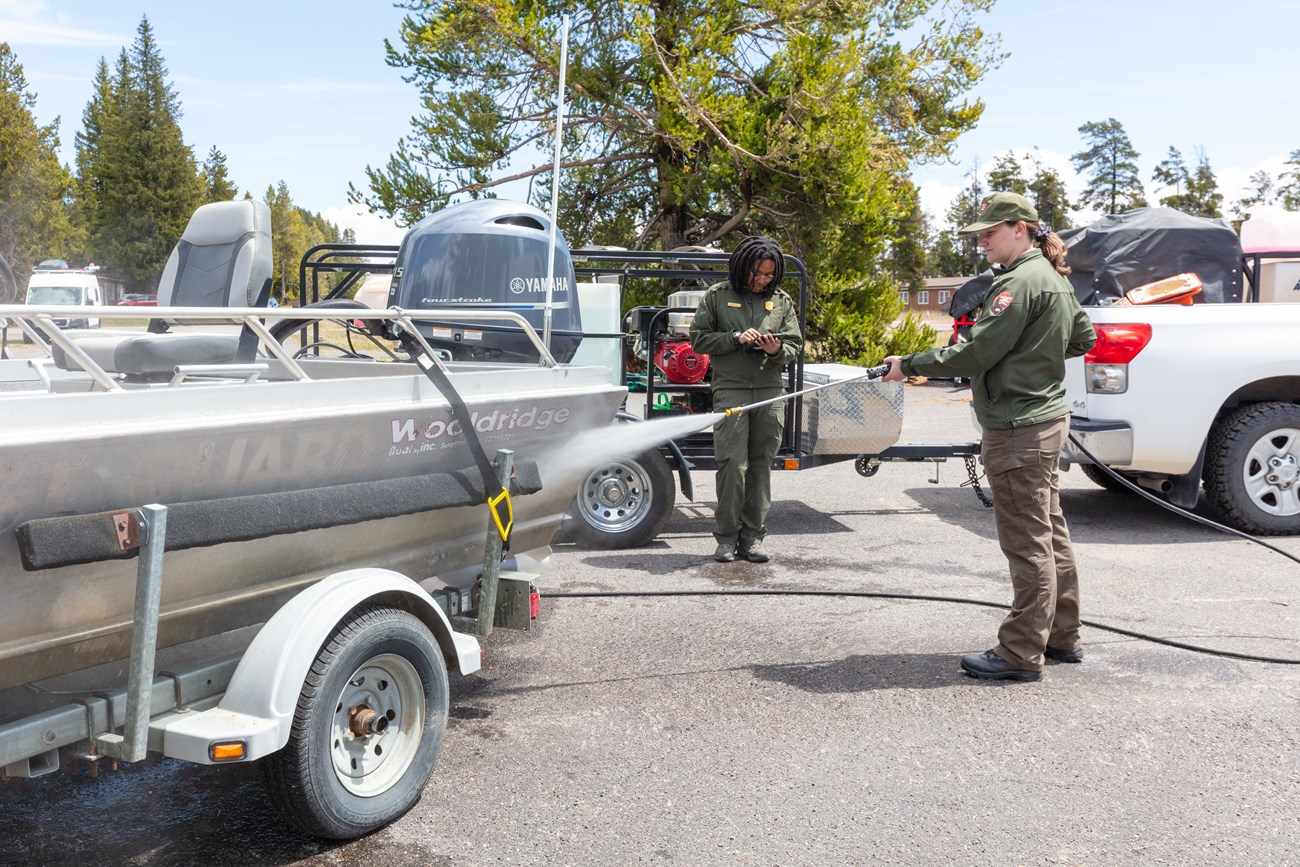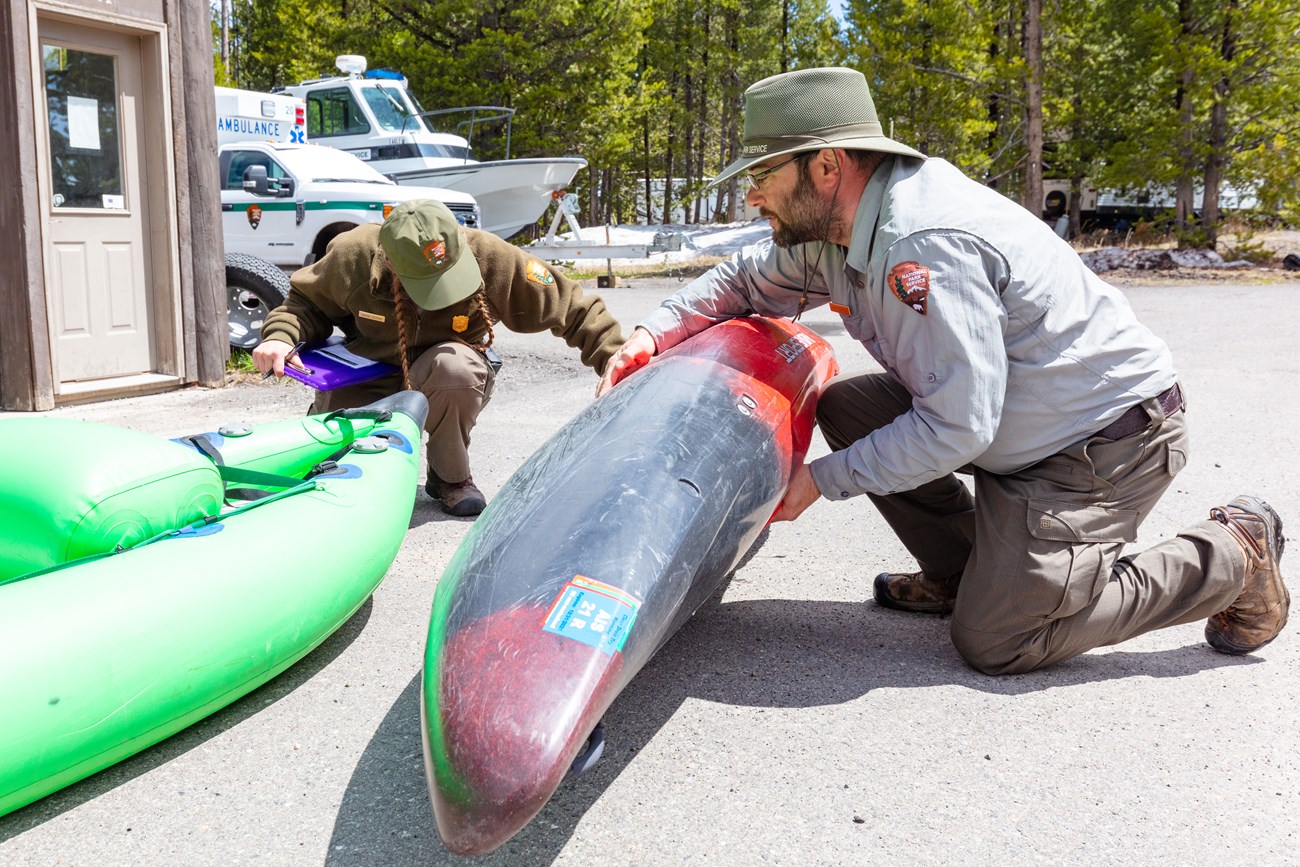Last updated: December 23, 2024
Article
I Didn't Know That!: Clean, Drain, Dry

With thousands of bodies of water to explore, national parks are great places to get out and have fun on the water. While boating, floating, and fishing are wonderful ways to spend the afternoon, people can unknowingly introduce harmful aquatic hitchhikers that can hide in and on boats and equipment. But there’s a simple way to prevent the spread... clean, drain, dry.

NPS Photo
What are Aquatic Invasive Species?
Aquatic invasive species are plant or animal species that are not native to an ecosystem and whose introduction causes or is likely to cause economic or environmental harm or harm to human health. Aquatic invasive species can quickly and drastically harm native species. They can transform habitats for native species by:
-
Introducing diseases
-
Out-competing native species
-
Altering food chains
- Changing the physical characteristics of aquatic habitats
Aquatic invasive species also impact us! They negatively impact the quality of outdoor recreation experiences, damage equipment, threaten human health and safety, and negatively impact local and regional economies.

NPS Photo
Stop Aquatic Hitchhikers!
An aquatic hitchhiker is any plant, animal, or organism that are transported through recreational activities.
Aquatic invasive species are spread in many ways including on boats, seaplanes, and equipment. They can also spread through aquatic recreation like fishing, boating, or diving. Aquatic invasive species can hide in mud, dirt, sand, and water making them hard to spot. Through these and other means, thousands of invasive species have been introduced into our park waters.
Sometimes these species are intentionally introduced through dumping aquariums, stocking lakes, and dumping unused bait fish. But most of the time, aquatic invasive species are spread unintentionally. They “hitchhike” on the surfaces of boats, motors, and gear. They also can be found in the water of ballast tanks, motors, bilges, live-wells, and other compartments. When that water is released into a different body of water, the aquatic invasive species can spread.

NPS / Jacob W. Frank
What You Can Do
Preventing the spread of aquatic invasive species starts with you! Following a few simple steps whenever you move from a body of water will greatly minimize the risk of spreading aquatic invasives to new locations. An easy way to remember the steps is Clean, Drain, Dry.
Clean
Cleaning removes visible plants, mud, and large-bodied organisms that are attached to or in boats, trailers, or equipment.
Before you arrive, clean all plants, animals, sand, mud, and other debris from your boat, trailer, anchor, boots, and equipment. Clean your boat and all gear as soon as you leave one body of water. Do not dump water or organisms from one water body into another. Professional cleaning with high-pressure, hot (120 to 140 F) water is recommended for boats when available.
Clean your gear before you leave the area where you fished. All equipment and foot gear, regardless of material, can carry aquatic invasive species.
Drain
Draining removes water which hides small and nearly invisible organisms.
Drain all the water from your boat, including the motor, bilge, live-well, and other compartments before you arrive. Leave the bilge plug out during transport (in some states, this is required by law). Do not dump water or organisms from one water body into another.

NPS / Jacob W. Frank
Dry
Drying is necessary to ensure that living biological material is not being moved. Many organisms can survive in small amounts of standing water.
Allow everything to dry for at least five days OR wipe with a towel before reuse.
Dispose
If you are fishing, dispose of unwanted bait, worm, and fish parts in the trash. The use of live bait is often prohibited in park waters, so make sure to check regulations before fishing. Never dump live fish or other organisms from one body into another.
Pass It On!
Did you learn something new? Pass it on! Protecting our ecosystems is a job for us all, but there’s no way for everyone to be an expert in everything. That’s why sharing knowledge is so important!
Download or screenshot this card to share with a friend or help you remember to clean, drain, dry (and dispose) to help prevent the spread of aquatic invasive species. Thank you for helping protect park waters so that they can continue to be enjoyed for generations to come.
I Didn't Know That! Clean, Drain, Dry
Aquatic invasive species are plant or animal spec eis not native to an ecosystem whose introduction can cause economic or environmental harm or harm to human health.
Aquatic invasive speceis can hitchhike in and on your boats and equipment.
What you can do to help stop the spread of aquatic invasive species:
-
Clean boats, trailers, & equipment
-
Drain bilge, livewell, motor & other compartments
-
Dry in the sun for at least 5 days or wipe with a towel.
go.nps.gov/idkt

